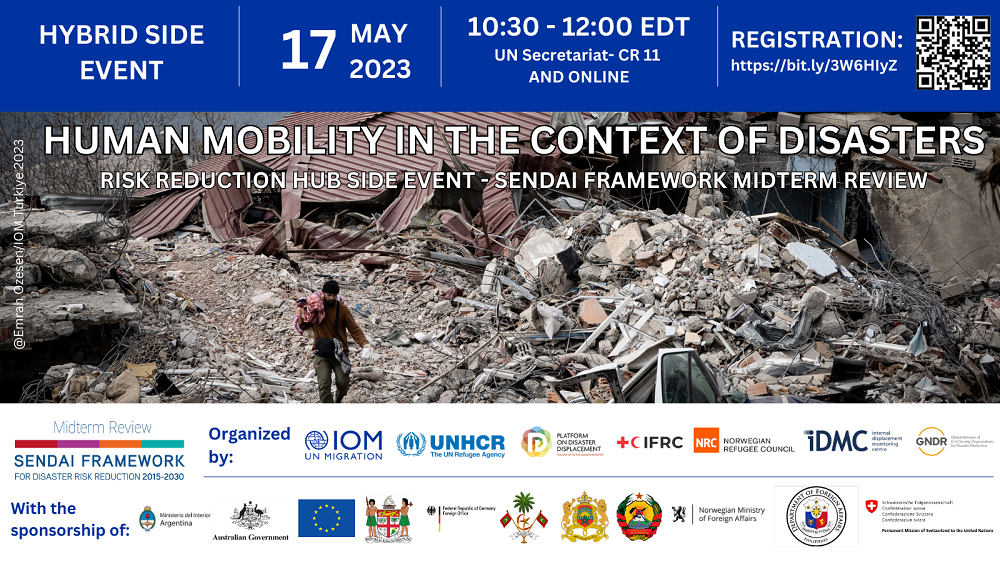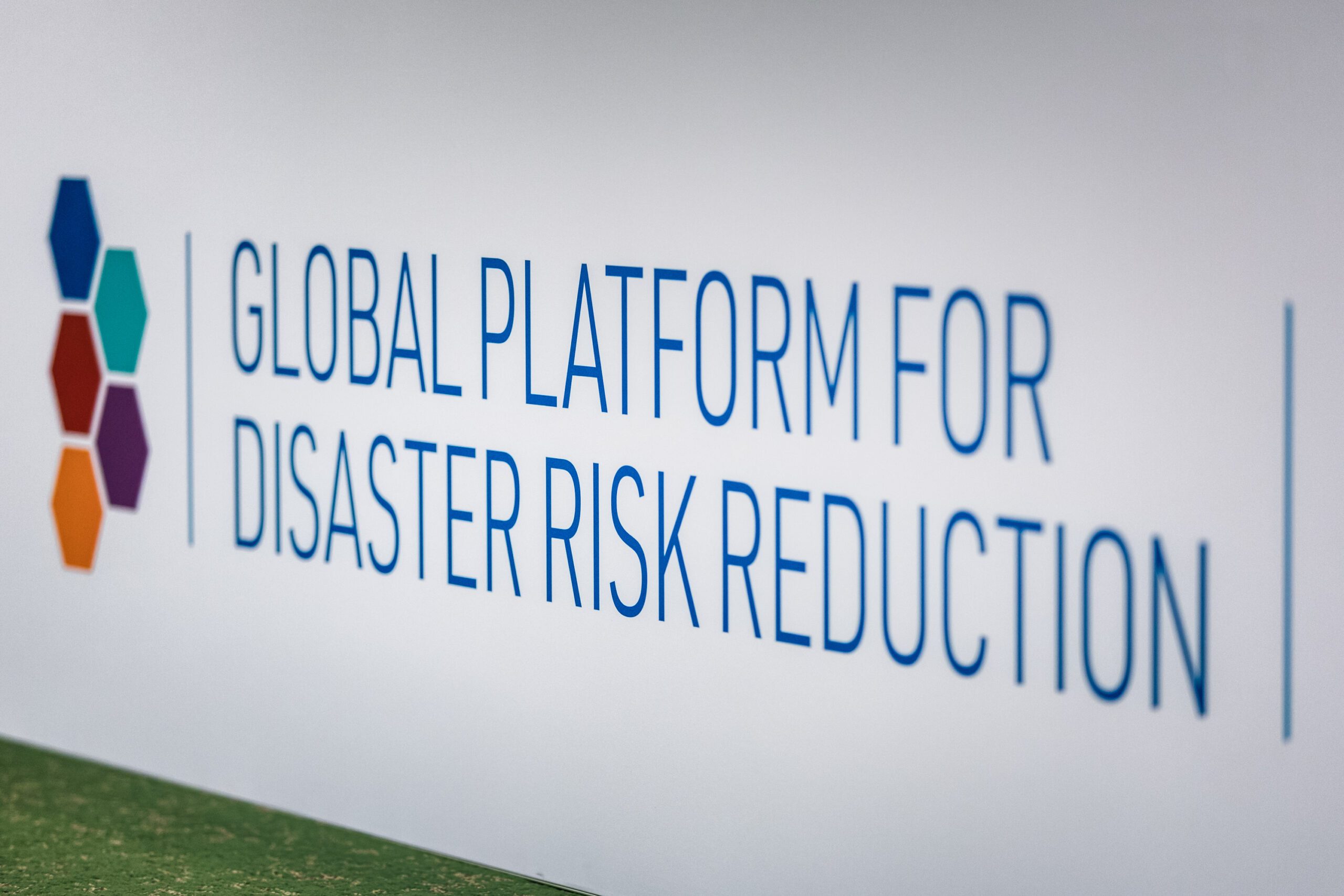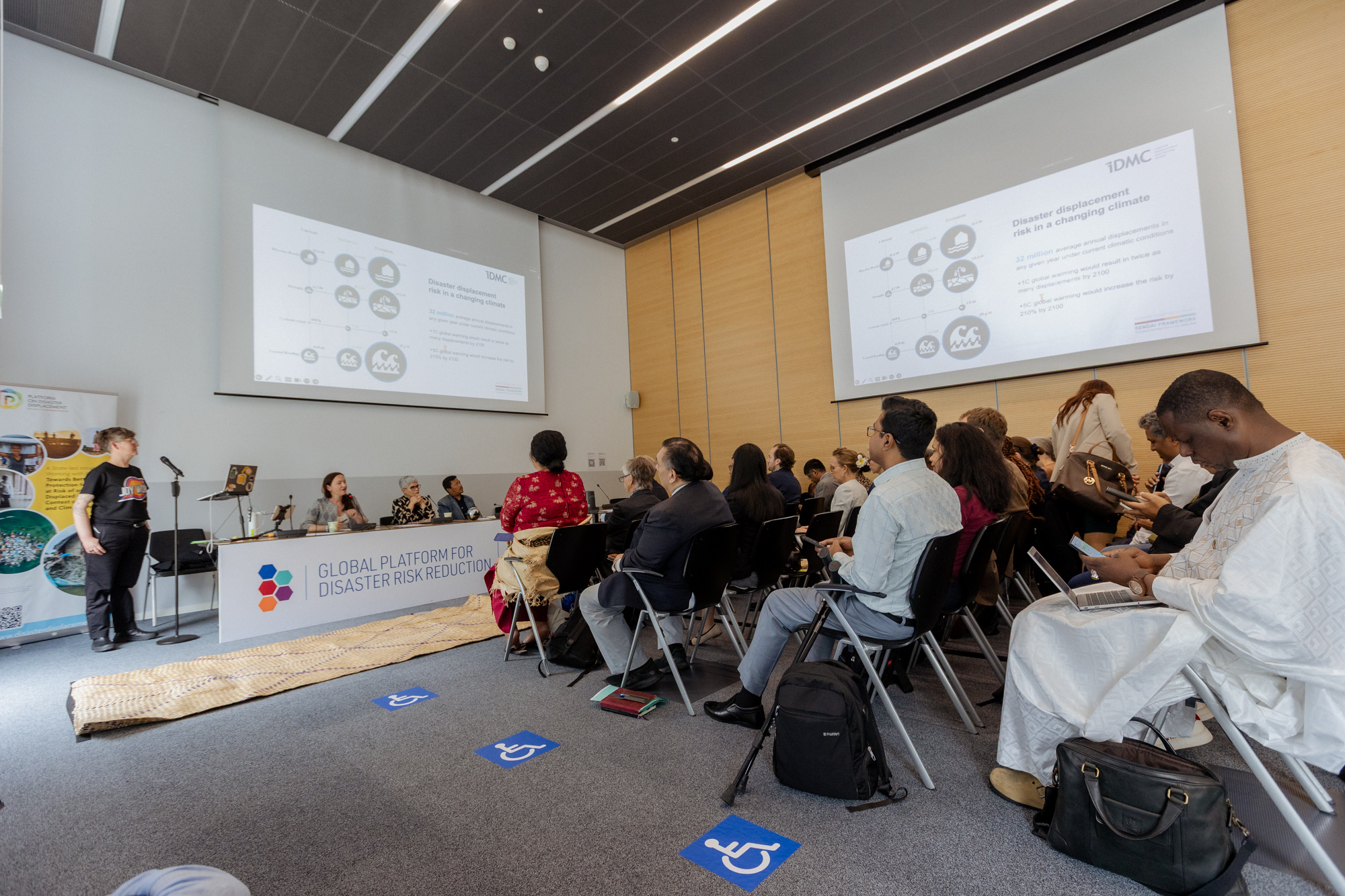Side Event – Human Mobility in the Context of Disasters

Sendai Midterm Review – Risk Reduction Hub
Hybrid Side Event
Human Mobility in the Context of Disasters
17 May 2023, 10:30am – 12:00pm NY time
UN Secretariat – CR11
RSVP collection via MS Form here
Background
Displacement is one of the main ways in which disasters affect people and is exacerbated by the adverse impacts of climate change. Between 2012-2021, an average of 23 million persons were displaced by disasters annually. The Türkiye-Syria earthquakes of early February 2023 resulted in over 50,000 deaths with more than 2.6 million persons living in temporary housing, reinforce the reality that every year, tens of millions of people are displaced or relocated from areas affected by the impacts of disasters. In the years to come these figures are anticipated to continue to expand as more vulnerable people will face more severe and frequent hazards in the context of climate change. A whole-of-society approach is required to meaningfully address this reality.
Human mobility (migration, displacement and planned relocation) considerations need to be well represented in all disaster prevention, preparedness, response and recovery efforts.
Providing protection and assisting people on the move and ensuring that human mobility decisions are taken in dignity is a primary responsibility of States and a critical challenge for all stakeholders engaged in reducing disaster risk, including civil society.
Integrating human mobility considerations in DRR action is key to reducing disaster risk and minimizing the negative consequences on people’s lives and the well-being of their communities. This requires the inclusion of local voices, expertise, knowledge and information from the frontline.
New preparedness actions and an elevated focus on early warning, early action and anticipatory action are equally critical in reducing risk. The provision of universal access under the Secretary General’s Early Warnings for All Initiative is a case in point. Failing to account for the impact of human mobility can extend and compound disaster impacts: displacement can prevent people from accessing services and supportive infrastructure, livelihoods, undermine their security and increase their exposure and vulnerability to other risks.
Effective disaster risk reduction strategies, policies and programming successfully integrate measures to address the implications of disaster-induced population movements across the humanitarian-development-peace nexus.
The criticality of these approaches is underlined in the Sendai Framework “addressing disaster-induced mobility to reduce risk and build resilience” [p.30l], recognizing the need to comprehensively look into the variety of movements (short- and long-term, short- and long-distance, forced and voluntary, planned or spontaneous) that can follow disasters. The relevance of this work is also stressed within the SG’s Action Agenda on Internal Displacement and the Agenda for Humanity, and rests upon internationally agreed upon principles on displacement and durable solutions.
This side event proposes to explore how States and other stakeholders engaged in reducing risk can strengthen integrated and comprehensive DRR policies and practices by:
1) Enhancing understanding and monitoring of population movements and disaster impacts;
2) Preparing for displacement, and other forms of human mobility associated with disasters and climate change;
3) Providing successful examples of operational responses in disaster contexts and tools to support policies that protect people on the move.
The event will provide an opportunity to learn about effective practices and approaches that DRR practitioners and governments adopt, in different contexts, to avert, minimize and address disaster displacement by: enabling people at risk to stay in their communities; protecting and assisting people who are already on the move; and supporting and empowering those who may need to move in the face of disasters and climate change.
Objectives
The objectives of the session are to:
1. Promote the inclusion of human mobility within broader DRR concepts, policies and programming inclusive of early warning systems to prevent and prepare for disaster displacement.
2. Raise awareness around the impacts of climate change and disasters on human mobility.
3. Highlight ongoing efforts to improve data on disaster impacts by capturing displacement, its impacts and relevant measures to address human mobility in disaster contexts while linking community and national level efforts to global disaster loss accounting.
Speakers and Moderator
Moderator: Dr. Alex de Sherbinin, Deputy Director/Senior Research Scientist at the Center for International Earth Science Information Network (CIESIN), Columbia University Climate School (in-person)
Speaker 1: Mr. Hisan Hassan, Chief Executive, National Disaster Management Authority, Republic of Maldives (in-person)
Speaker 2: Par Liljert, IOM Director, New York Liaison Officer (in-person)
Speaker 3: Ana Cristina Manuel, Director, National Emergency Operations Center, National Institute of Disaster Risk Reduction and Management (INGD), Republic of Mozambique (in-person)
Speaker 4: Mr. Tanjir Hossain, Resilience Adviser for ActionAid (in-person)
Speaker 5: Ms. Loretta Hieber Girardet. Chief Risk Knowledge, Monitoring and Capacity Development, United Nations Office for Disaster Risk Reduction (UNDRR) (in-person)
Speaker 6: Mr. Ibrahim Ozer, Director-General for Disaster Management and Climate Change, Turkish Red Crescent (in-person)
Speaker 7: Alexandra Bilak, Director, IDMC (remote)
Partners
IOM, UNHCR, IFRC, NRC, IDMC, GNDR, the Platform on Disaster Displacement
Co-sponsors
Argentina, Australia, the European Union, Fiji, Germany, Maldives, Morocco, Mozambique, Norway, the Philippines, and Switzerland
Useful Links
Register here for the side event
Read the concept note of the side event
Download the flyer
Learn more about the Risk Reduction Hub and the side events
Read the concept note and the programme of the High-Level Meeting
Read more about Human Mobility at the Sendai Framework Midterm Review High-Level Meeting




